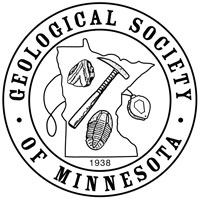Seminar Lab Date:
Seminar Lab presenter:
Seminar Lab Subject:
Seminar Lab Location :
A recording of this lecture is available on the Geological Society of Minnesota YouTube channel here: https://www.youtube.com/watch?v=NtiEU-lyZwM .
Seminar Lab Details:
Abstract: The Transantarctic Mountains (TAM) are one of Earth's great mountain belts and are a fundamental physiographic feature of Antarctica. They are continental in scale, traverse a wide range of latitudes, have high relief, contain a significant proportion of exposed rock on the continent, and represent a major arc of environmental and geological transition. Although the modern physiography is largely of Cenozoic origin, this major feature has persisted for hundreds of millions of years since the Neoproterozoic to the modern. Its mere existence as the planet's longest intraplate mountain belt at the transition between a thick stable Archean craton in East Antarctica and a large Cenozoic extensional province in West Antarctica is a continuing enigma. Despite their remote location and relative inaccessibility, the underlying geology provides important clues for reconstructing past supercontinents and influences the modern flow patterns of both ice and atmospheric circulation, signifying that the TAM have both continental and global importance through time.
I'll give a broad overview, take folks on a geo-tour, and then touch on a few highlights where my work fits in, particularly on the Ross Orogeny (Cambrian-Ordovician).
Biography:
B.Sc. Geology, Carleton College, 1980
M.Sc. Geology, University of Montana, 1983
Ph.D. Geology, University of California Los Angeles, 1987
I've led 15 research expeditions to "the ice" since 1985. My main research interests are in development of the Precambrian shield of East Antarctica (both from rock exposure and from remote techniques like aeromagnetics, detrital mineral provenance, and using glacial erratic clasts as proxies for ice-covered basement) and in tectonic development of the Ross Orogen (an Andean-style convergent margin orogen active from about 600-480 million years ago).
